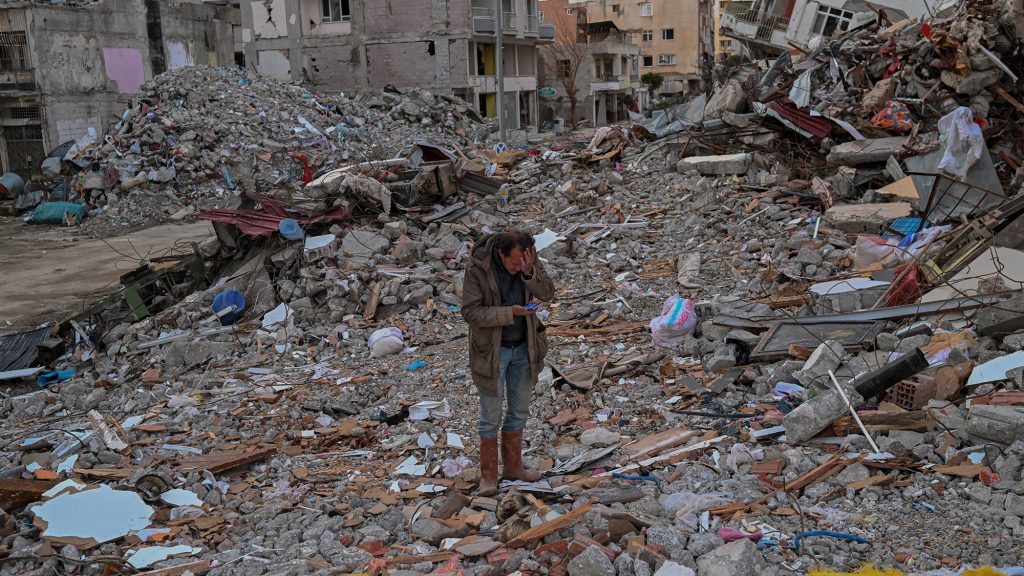Something could have caused the rock plates to sever, possibly hindering their movement, and the accumulated energy could not be balanced yet. This may explain the severe aftershocks in Turkey.
More than two weeks have passed since the devastating 7.8-magnitude earthquake in Turkey, and there are still reports of aftershocks on a daily basis. Basically, there is nothing unusual about this, every Earth movement is followed by increasingly quiet aftershocks, but in this case it is as if the Earth does not want to calm down:
Category 6 over is one of the strongest in the area—the historic record 7.8 on Feb. 6, and we wrote about it in more detail here—earthquakes that also claimed more deaths don’t exactly indicate to the average person that they’re heading toward a break point we’ve been advancing.
Our current knowledge and technologies are not suitable for predicting earthquakes, even in the short term. At the moment, science can determine which areas are most likely to be affected, as well as the frequency and maximum strength of earthquakes in a given area—forces working deep within the Earth can rewrite the latter. But we know what causes earthquakes, and herein lies the explanation for the status quo.
What happens under Turkey? Dr. Gabor Temar Professor of Geophysics, AZ ELTE Department of Geophysics and Space Sciences We asked for your manager’s help.
Colossal forces press on each other
Imagine a lake whose waters are moved by strong currents and its surface is frozen. In such conditions, no continuous ice cap can remain, but rather the surface is covered in smaller and larger sheets of ice that extend along thousands of cracks. As a result of the currents, they move, slide to the side, under or over each other, break and compress. In the same way, our Earth’s solid outer shell, which is about 100 km thick, is enclosed in a “viscous mass” called the asthenosphere, which extends beneath it to an average depth of 600 km.
In the classical sense, it is not yet a rock melt, more akin to a solid state, but plastic enough to allow the rock sheets resting on it to move. The energy for this is provided by the heat arising from the interior of the planet
Gabor Temar says 24.hu.
In other words, the Earth’s internal heat rushes toward the surface and moves the hard, solid upper plates, similar to the ice sheets in our example. On average, we can say that the shale plates below us are moving 2-3 centimeters per year, which is how much the distance between the east and west coasts of the Atlantic has increased. Moving on a geological time scale, the currents generated by the Earth’s heat change, thanks to which the land masses sometimes gather into one supercontinent, and sometimes they break up into parts, as we can see now when we look at the map.
At the meeting of two rocky plates, along the boundary of the plates, colossal forces press on each other, and the later you reach the vineyard, the greater the end. Energy accumulates and accumulates on both sides, until the rock gives way: with a huge crack, the two plates break, tear apart, collapse and finally move. This is called an earthquake. Click here We can see how common it is.
Something may be blocking your movement
The just activated plate boundary in the southern part of Turkey belongs to the East Anatolian Rift System, the Anatolian and Arabian rock plates (massacle) meet here. Arabia will push Anatolia northward at an average of about 2 cm per year, which in turn will move west on its own, due to the “pulling” of the Aegean Plate, about 3 cm per year.
It is clear that it does not move constantly, but from time to time: often only a few millimeters or centimeters, and even meters every 100-1000 years – as an ordinary person, we can say that in small or larger doses it brings an average of 3 cm in the long run . The tension built up so far caused a surface displacement of 3 meters in February, and according to the professor, it’s not over yet:
It could have an impact beyond that
Gabor Temar believes that we can expect larger earthquakes in the region until the new state of calm is achieved. Moreover, ground movements are expected not only in the southern part of Turkey, but also along nearby fault lines, at contacting plate boundaries.
In other words, aftershocks are still wreaking havoc in the area, and there is no doubt that something has been “activated” in the area, which should cause continuous and powerful movements.
With regard to our country, it is the fault lines that are active in Croatia and Romania that larger earthquakes can occur. The professor believes that the impact of events in Turkey will not reach our southwestern neighbor, but the situation is not very clear in the case of Romania, as the position of the Anatolian plate has very little chance, but it may move the Earth. .











































